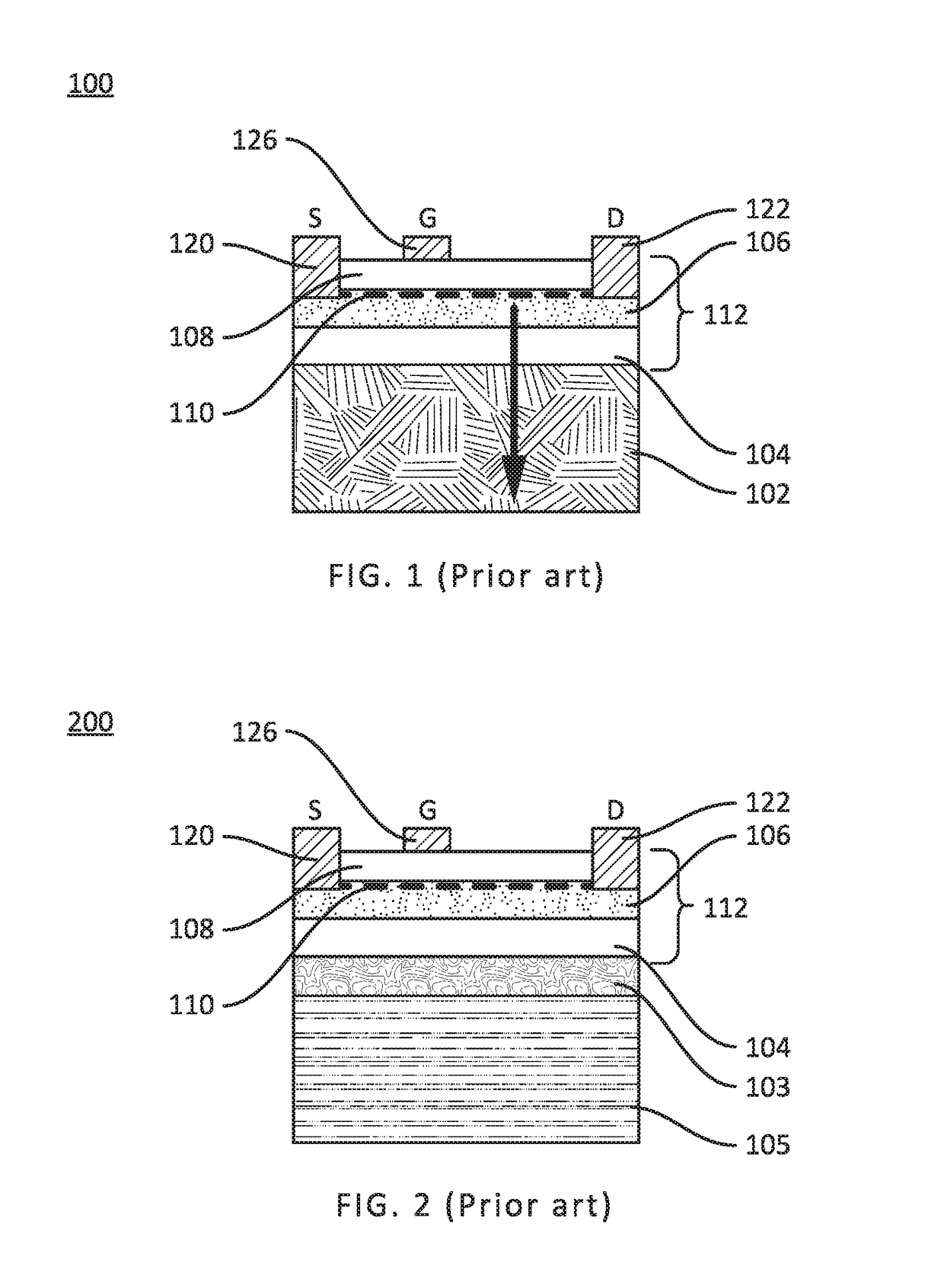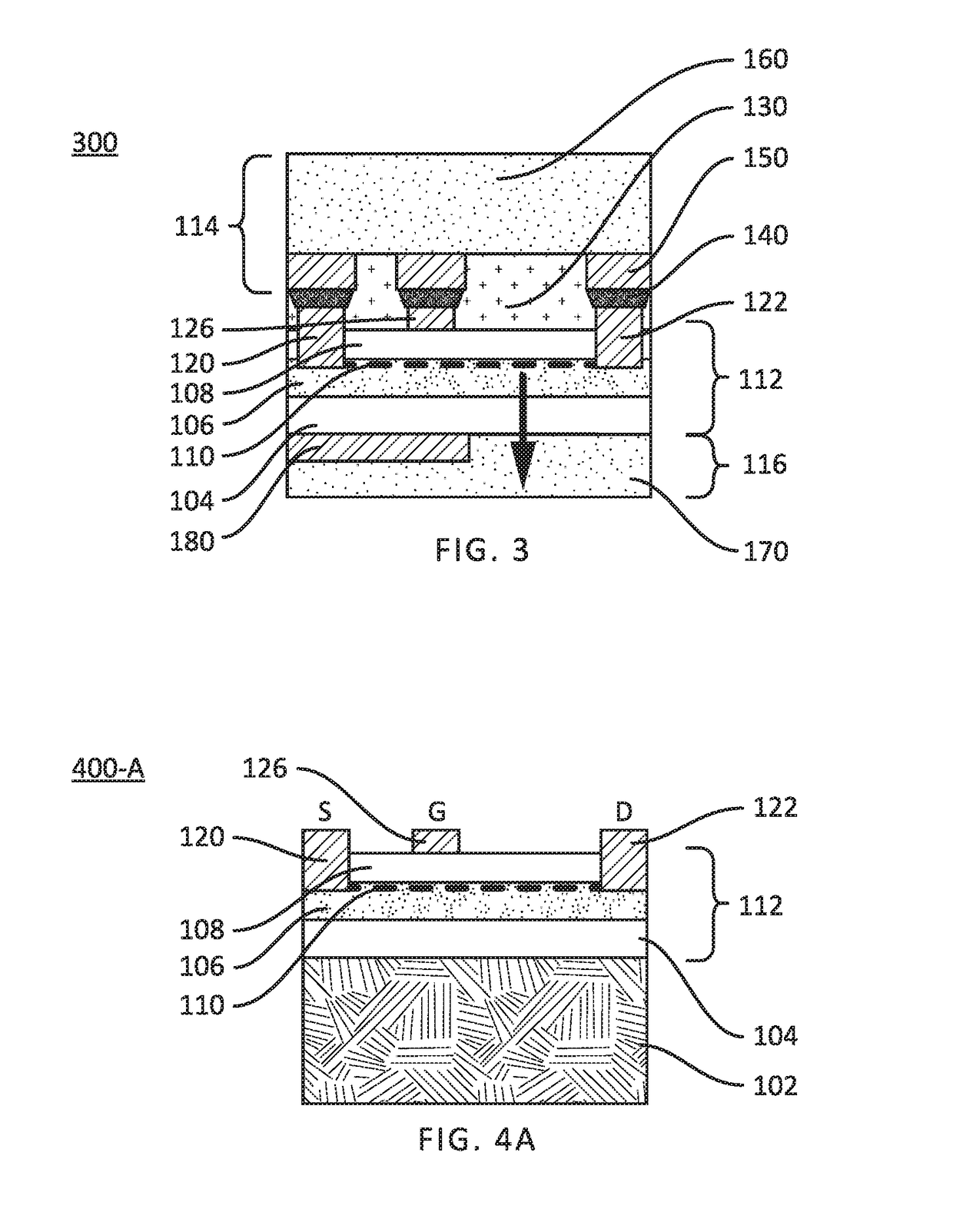GaN semiconductor device structure and method of fabrication by substrate replacement
a technology of gan transistor and substrate, which is applied in the direction of semiconductor/solid-state device testing/measurement, semiconductor device details, semiconductor/solid-state device testing/measurement, etc., can solve the problems of poor thermal dissipation of sic substrate relative to sic substrate, significant influence of breakdown voltage and thermal dissipation of gan transistor, and the limitation of maximum breakdown voltage of silicon substra
- Summary
- Abstract
- Description
- Claims
- Application Information
AI Technical Summary
Benefits of technology
Problems solved by technology
Method used
Image
Examples
Embodiment Construction
[0101]FIG. 1 illustrates schematically a simplified cross-sectional view of a conventional device structure 100, comprising a lateral GaN power transistor, fabricated on a silicon substrate 102. The GaN semiconductor layers comprise one or more buffer layers or intermediate layers 104, a GaN layer 106, and an overlying AlGaN layer 108, which are formed epitaxially on the native silicon substrate 102. The latter may be referred to as the growth substrate. The GaN / AlGaN heterostructure layers 106 / 108 create a 2DEG active region 110 in device regions of the GaN-on-Si substrate. The stack of GaN epitaxial layers that is formed on the silicon substrate, i.e. intermediate layers 104, GaN layer 106, and AlGaN layer 108, and any intervening layers not actually illustrated, will be referred to below as the “epi-layer stack” or “epi-stack”112. After formation of the epi-stack 112, source, drain and gate electrodes are formed. For example, a conductive metal layer, e.g. a layer of aluminum / tit...
PUM
 Login to View More
Login to View More Abstract
Description
Claims
Application Information
 Login to View More
Login to View More - R&D
- Intellectual Property
- Life Sciences
- Materials
- Tech Scout
- Unparalleled Data Quality
- Higher Quality Content
- 60% Fewer Hallucinations
Browse by: Latest US Patents, China's latest patents, Technical Efficacy Thesaurus, Application Domain, Technology Topic, Popular Technical Reports.
© 2025 PatSnap. All rights reserved.Legal|Privacy policy|Modern Slavery Act Transparency Statement|Sitemap|About US| Contact US: help@patsnap.com



